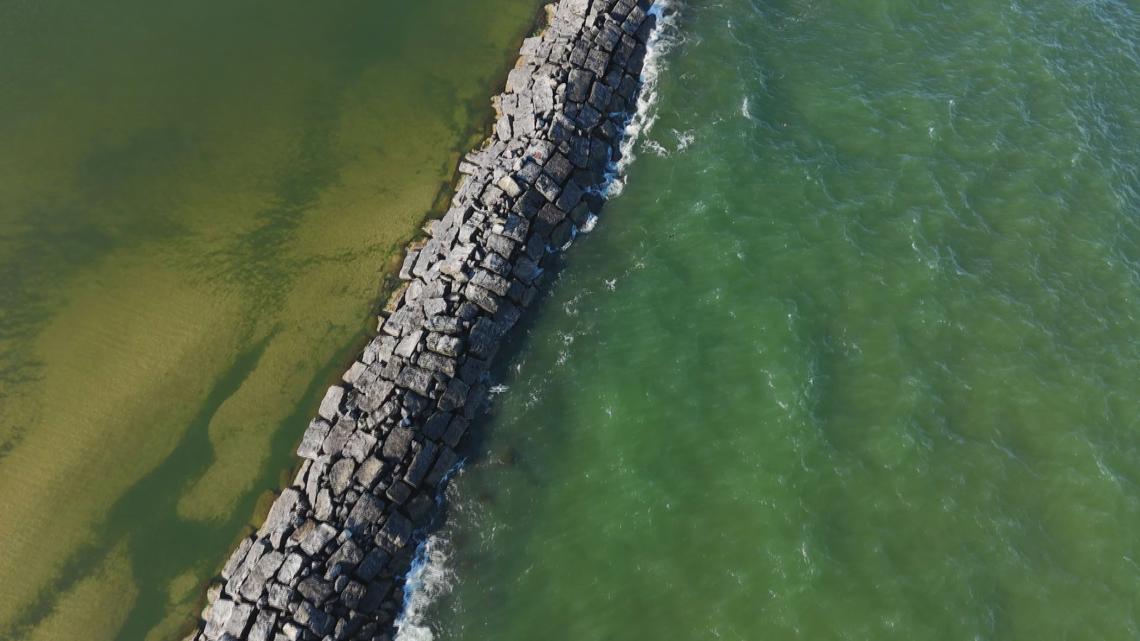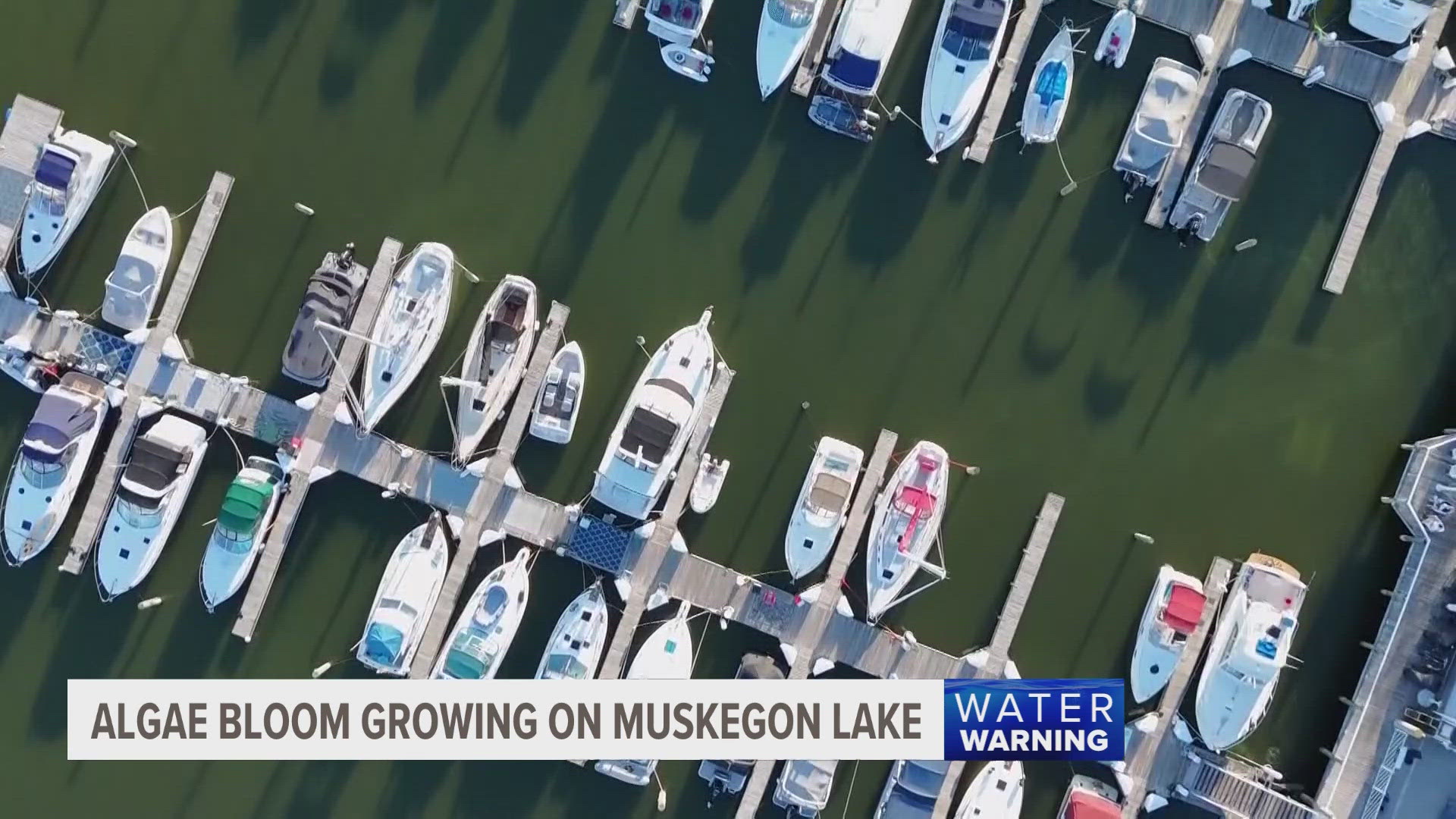MUSKEGON, Mich. — If you've been to Muskegon Lake recently, you may have noticed a green hue to the water.
According to the Michigan Department of Environment, Great Lakes and Energy (EGLE), that green tint is a result of the lake's recurring algal blooms and can be harmful to you.
Jeff Johnston, a spokesperson for EGLE, said over the last several years they have confirmed cyanobacteria blooms at Muskegon Lake and have had multiple hits for harmful algal toxins.
Johnston described it as a "consistent and recurring problem."
But what does this all mean?
Johnston said not all algae is harmful in the same ways. He said some green masses mixed into the water columns are harmful algal blooms and some are not.
He said a harmful algal bloom is generally caused by an organism called cyanobacteria, or blue-green algae. This algae produces toxins that aren't good for humans to touch, ingest or even breathe in.
However, EGLE said it isn't possible to tell whether algal blooms have harmful toxins just by looking at them.
To keep yourself safe from potential toxins, it's best to avoid any body of water covered with algae or with significant algae on the surface.


EGLE said summer is the peak season for the formation of harmful algal blooms and they usually occur during periods of warm temperatures, lots of sun and high nutrient levels.
Johnston said often these nutrients find their way into the water when there are heavy rains, as nutrients from ashore wash into the lake and become available to organisms in the water.
"When I talk about nutrients, that's not what you and I think about in terms of nutrients for ourselves," Johnston said. "These are biological substances that can feed other feed plants and animals in the water, things like animal droppings."
This causes the algae to have a growth explosion.
He said these spikes usually go back down after a few days, as the currents, winds and wave action can help to break them up.
"Algae has a place in the ecosystem, but, like anything else, it has its proper place," Johnston said. "And when there's an overabundance of anything in the ecosystem, it's probably a sign of something out of balance, something out of whack that we would want to see corrected or remedied over time."
He said there are things the community can do to help prevent these harmful algal blooms from forming.
If you live on the lakeshore, he said it's important to be mindful of the types of chemicals you use on your lawn and what kind of shoreline vegetation you have.
For example, Johnston said native plants and organisms can help absorb runoff and prevent the erosion of the nutrients the algal blooms use to form into the water.
He also said it's necessary to be mindful of the overuse of fertilizers because the extra fertilizer will run off into the water and help to fertilize the algae and the plants in the water.
Finally, he said it's important to ensure your septic system is maintained well and regularly checked to ensure it's working properly and not polluting the water.

